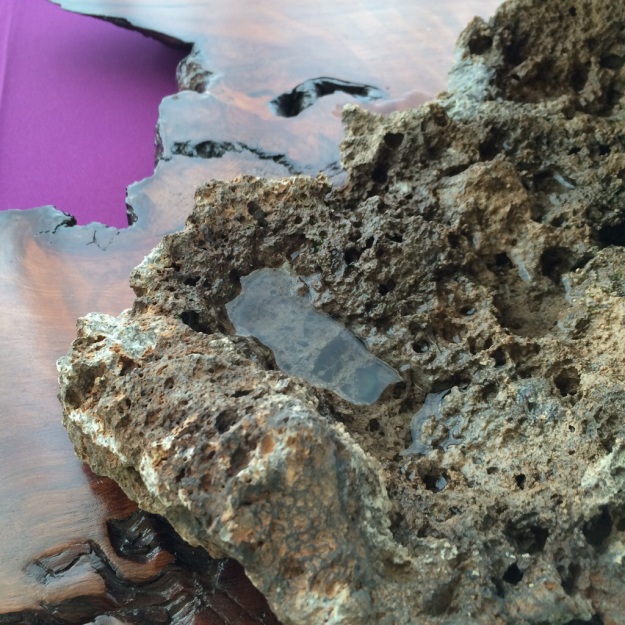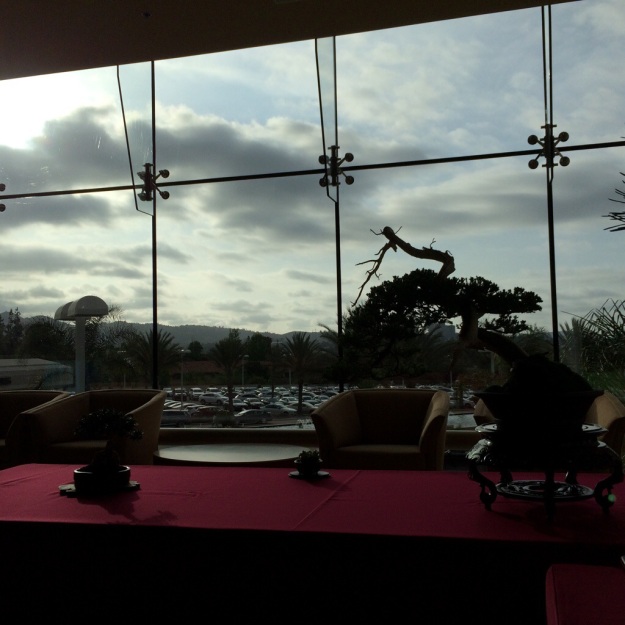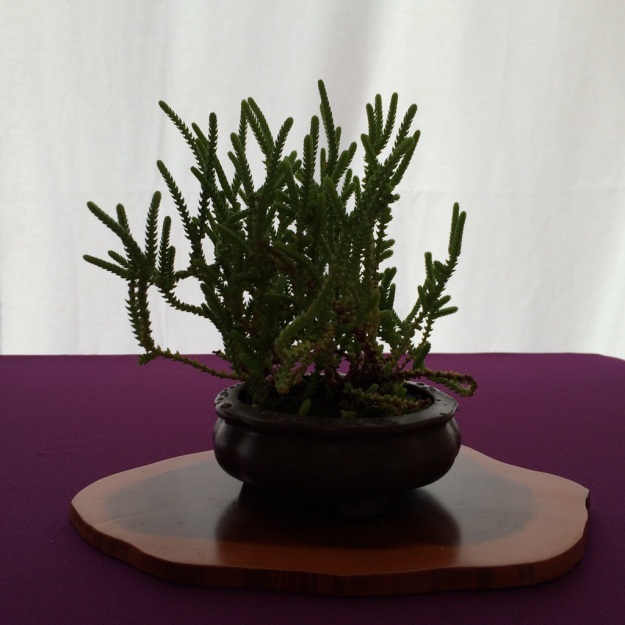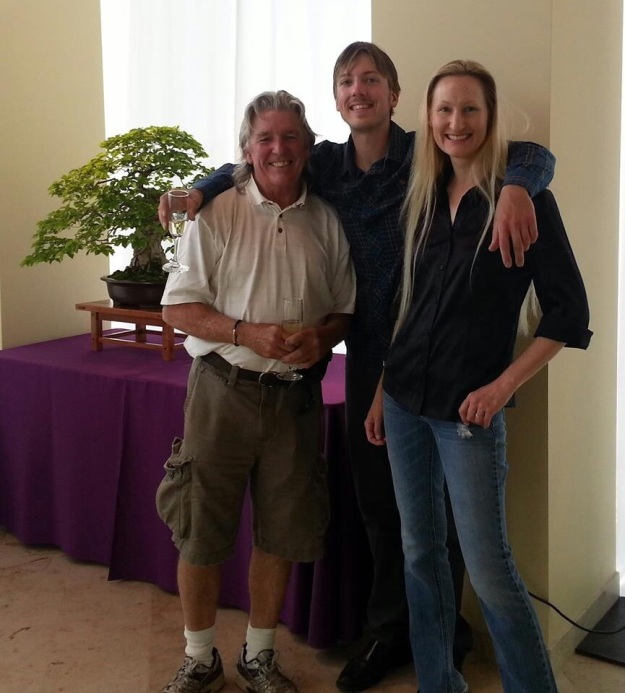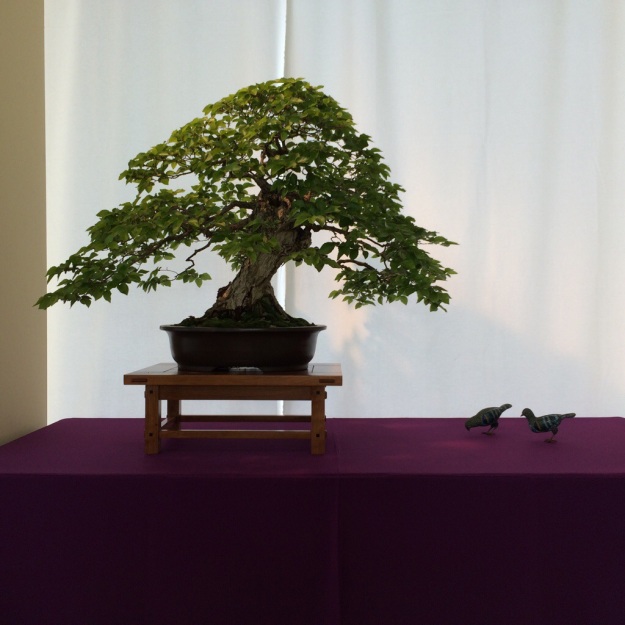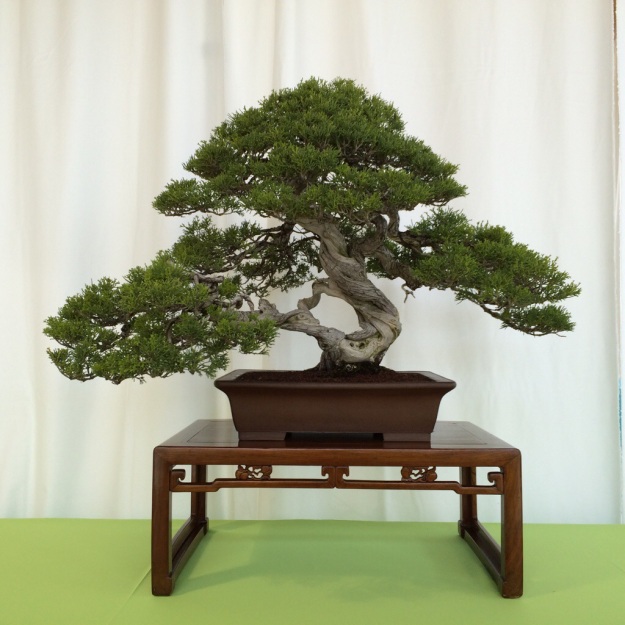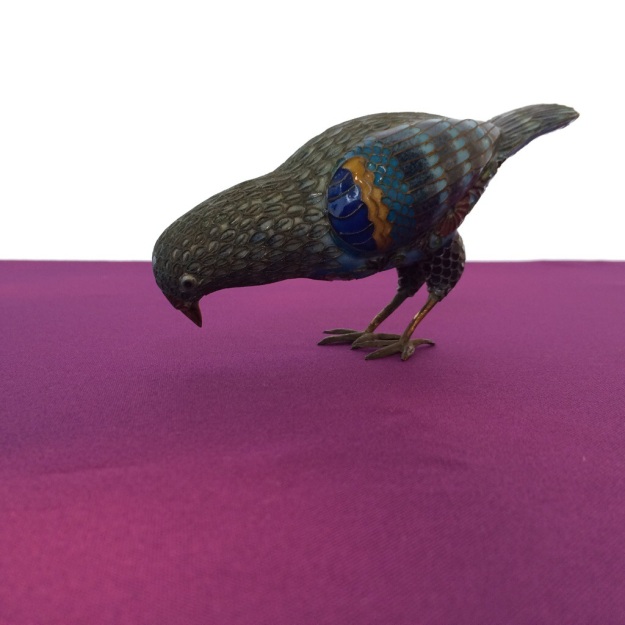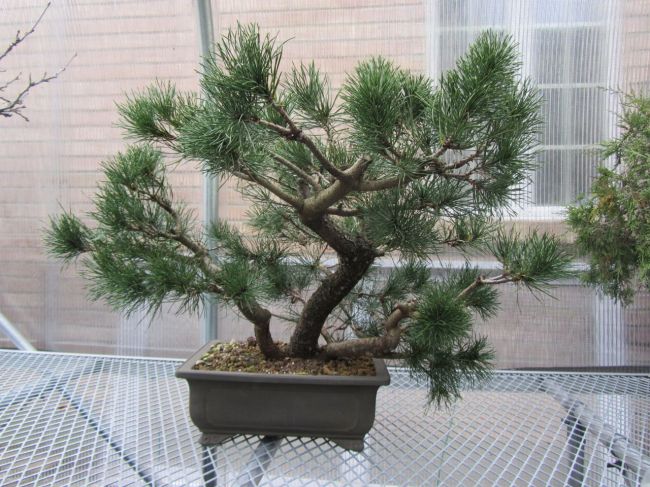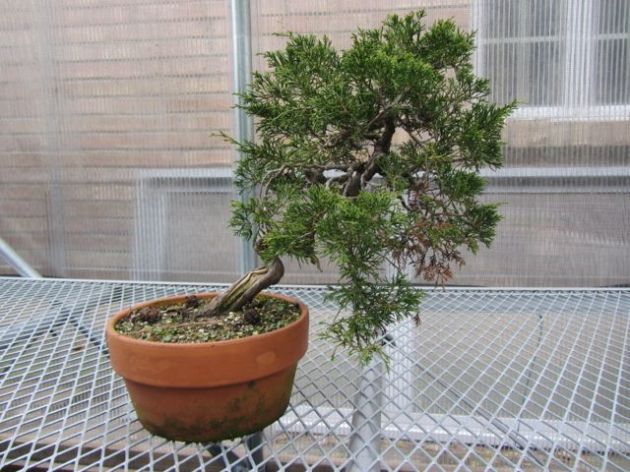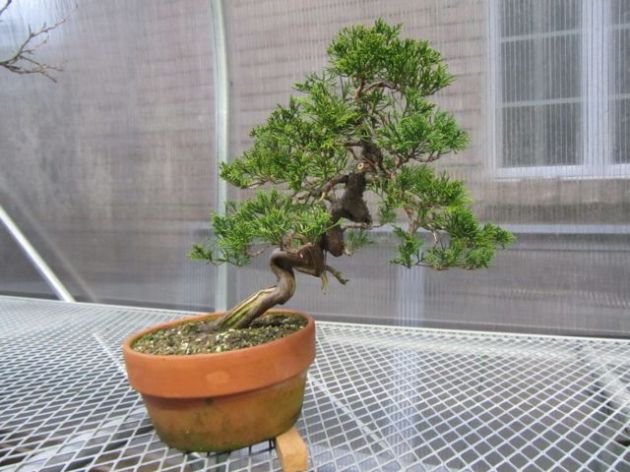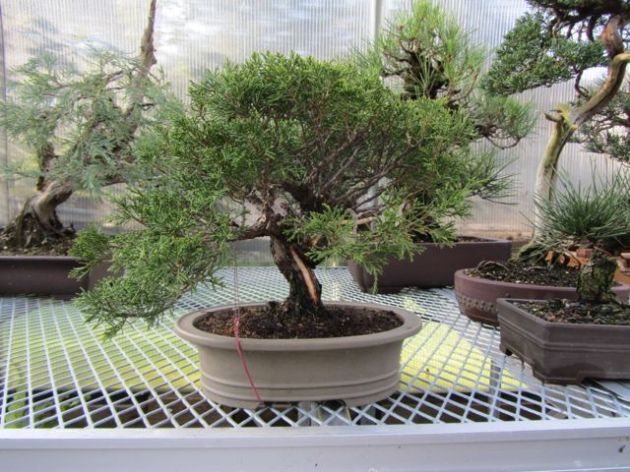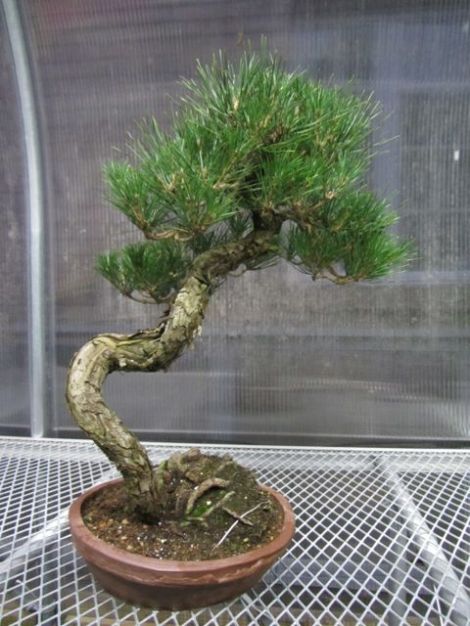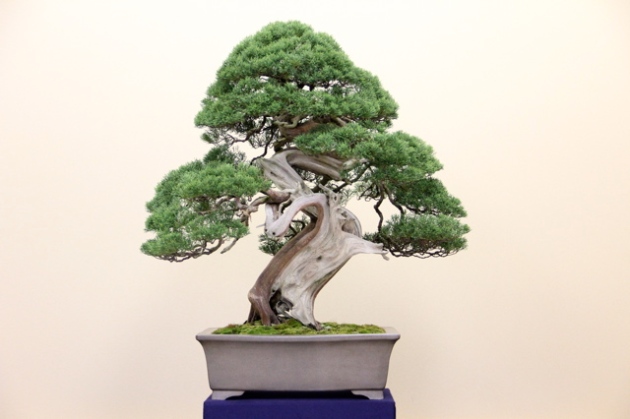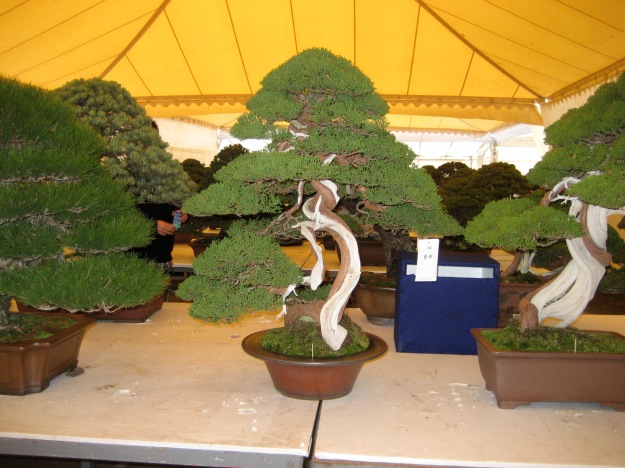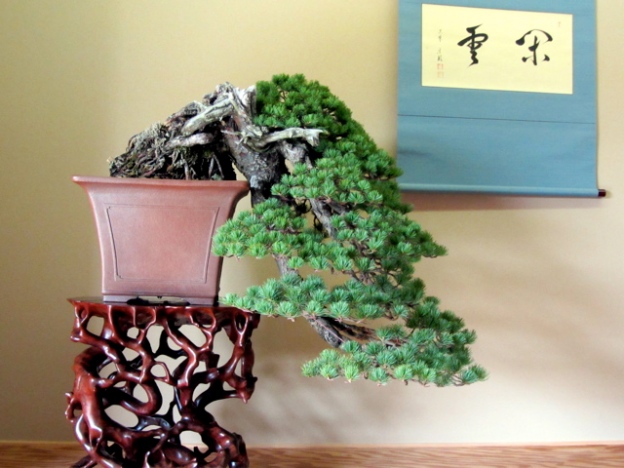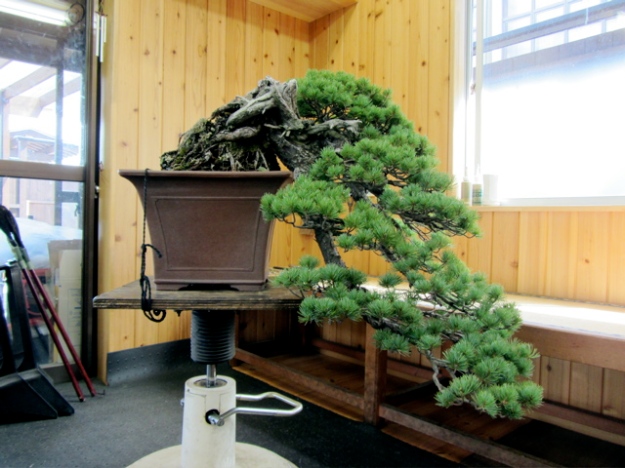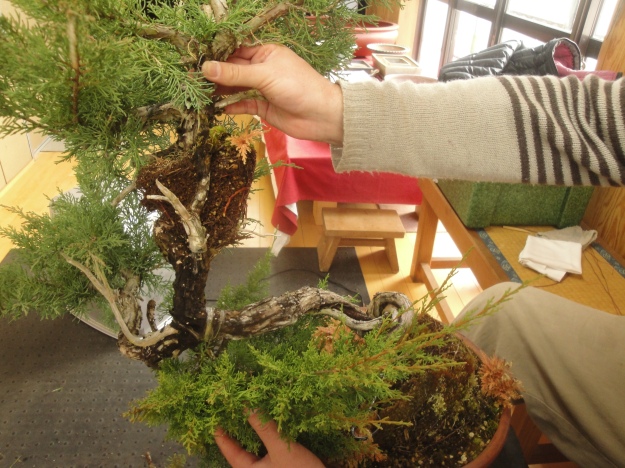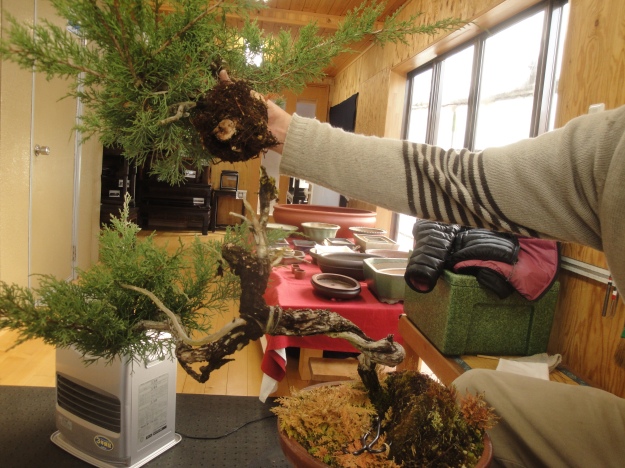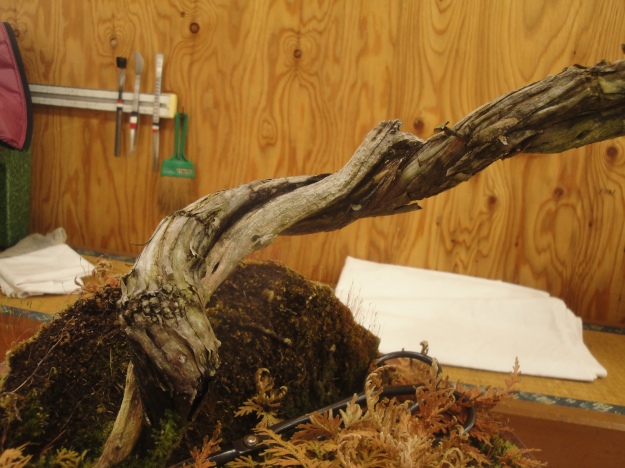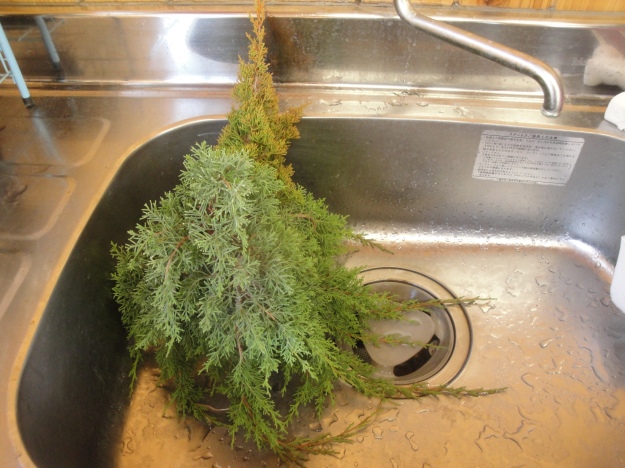This year we have about 7 displays in Taikan-ten, the Bonsai exhibition which focuses heavily on the art of display, held annually at the Kyoto Art Museum. Although I am unable to attend this event, I was able to help put together some nice displays with the team a couple days before the start of the show. As always, being in the same room as my teacher and the Tokonoma (display alcove) was a fun day full of learning and trying to understand or even shed a little light on the deeper meaning manifested within each display. So what is the point of Bonsai display? Yes, to show off how awesome our tree’s have become, of course. However, when we think about formal displays that exhibit multiple components (scrolls, accents, etc) we need to firstly acknowledge the season. Since Taikan-ten is held at the end of Fall in Japan, most of the displays you will see deal with Fall scenery and subtleties of life accordingly.

Here is a Shinpaku I was given to wire for the show, what does this display tell you?
To me, this display captures the change of season, Fall becoming Winter. One good clue to look for is the snow on the mountain, it looks as if snow just fell for the first time. I considered using a stone for the accent, but the softer yet grand appearance of the tree called for something less dramatic, therefor, a fern accent plant was chosen.
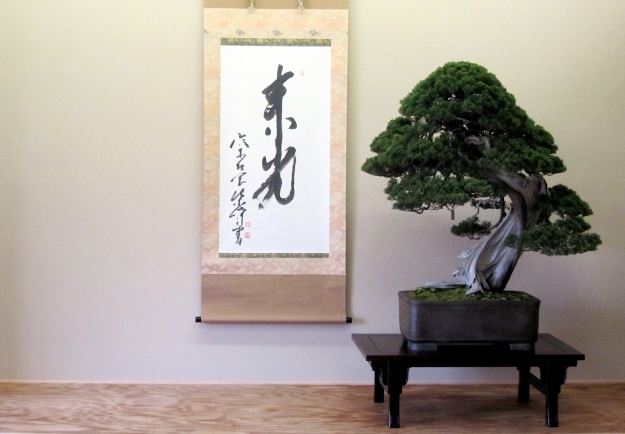
My teacher owns a plethora of scrolls, we often try a few out before deciding the most suitable image. I was told the Kanji on this one means “Eastern light”. Rising sun?
I wouldn’t say that this scroll is “wrong” for this display, it just feels a little over-powering.
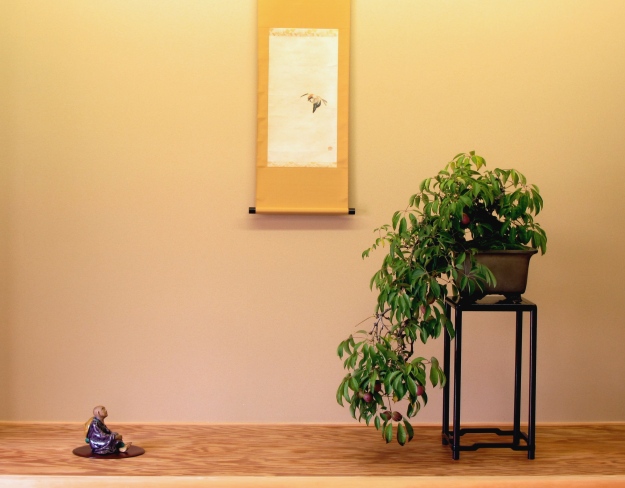
Oyakata left it up to Tyler to compose the display for this “Mube” (pronounced mooh-beh).
There is a very curious and interesting history behind this wild vine, which is native to Japan and other countries in the East. These vines can pop up anywhere, as their seeds are spread by bird droppings. I hadn’t realized this before which is why I’m impressed with Tyler’s initial decision of the Suzume (Sparrow) scroll. Just goes to tell you, when making a display going with your gut and first instinct is usually the best thing to do.

The scientific name for MUBE is stauntonia hexaphylla.
MUBE got its name centuries ago when a family living in a little town on the shores of Lake Biwa in Shiga-prefecture offered MUBE fruit to the Imperial family. Apparently in the 7th century MUBE was a rare fruit; it was told that the emperor Tenji encountered an elderly couple when hunting around Lake Biwa. He asked the couple “how do you stay so strong in old age”? The couple responded to the emperor “here there is a special fruit that has the power to give long life and keep the sickness away”. Upon trying the fruit himself the emperor exclaimed “MUBE NARU KANA”! “It is indeed so”! So there you have it, the magical story of MUBE! Now I gotta try one of these for myself…

Switched up a little bit.
Here we have a new flowering accent plant and a scroll with falling red maple leaves. I like the narrowness of the scroll better, it works for the overall balance but just doesn’t seem to have as much of a story behind it. For that reason I lean toward the first display with the Sparrow and old man figurine. It draws a full circle of meaning, and tells a story; that I do believe is the essence of a great display. Also one note about the stand! You don’t want the stand drawing more attention to your eye than the tree, the simpleness of this stand works best with the MUBE.
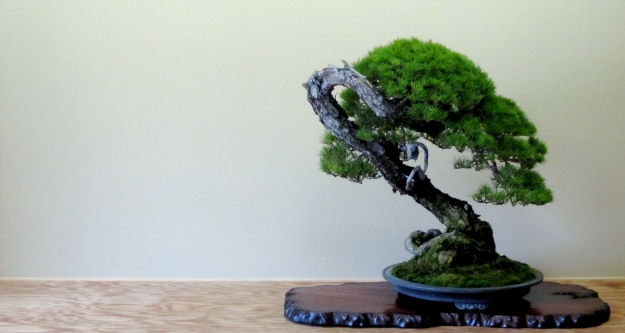
I call this the “Darth Helmet Tree”.
This Red Pine has such a broad apex it makes me giggle to myself at times, however, one might feel a little tipsy with all that leaning movement if there was a little dainty apex instead. This tree has been wired 3 times in the last few years by three different artists in this order: Omachi Isao, myself, and most recently refined by Tyler. We also call this the “never ending tree” because it seems impossible to get the balance just right. No scroll was used, just a simple set up using a nice root slab and accent plant.

Tyler getting a few pointers from the master during the photo shoot. The camera don’t lie!
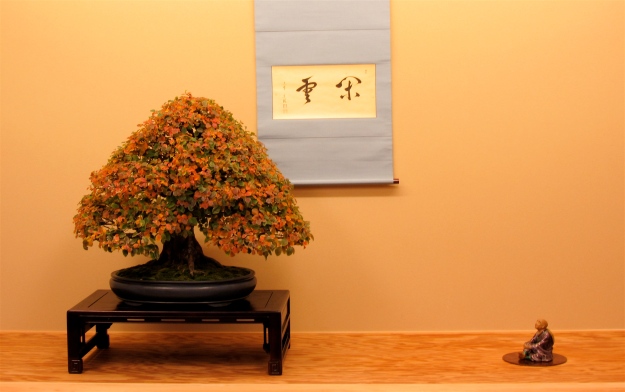
Relaxing and taking in the beautiful colors, Chinese Quince.
When my teacher is explaining what the writing on a scroll such as this one mean, it is very easy to get lost in translation, so to speak. There is usually a whirlwind going on inside of my head when this happens, so I just try to snag the key words before they get blown away in the torrent. From what I can remember, the kanji describes the movement of clouds, and how they remind us that life is always moving and changing. And here we have in this display an elder, sitting beneath the clouds reflecting on a cool Autumn day.

Just chillin

Once again, the famous Shishi that won Kokufu last year, in all its glory.

These wooden deer carvings are not of the best quality, but a safer way in case somebody feels like shop-lifting.
You can’t see it too well, but that is an image of Mt. Fuji in the background. It is very faint, maybe the artist was trying to suggest that he was up at the crack of dawn painting it… or not. Anyway, it gives me an early morning feel, especially with the deer already awake. Hope you enjoyed these displays and learned something along the way, definitely more posts to come on this subject!


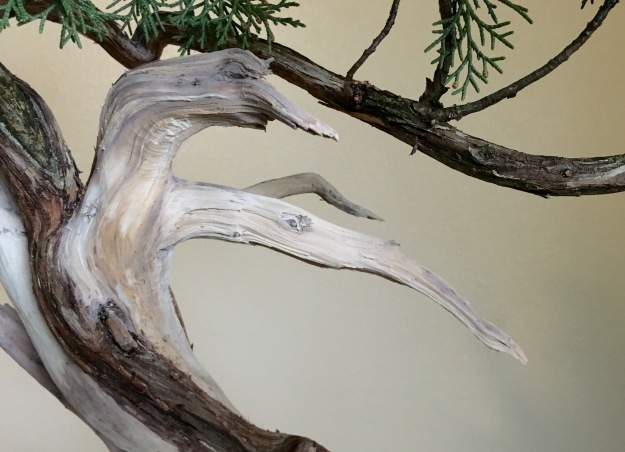
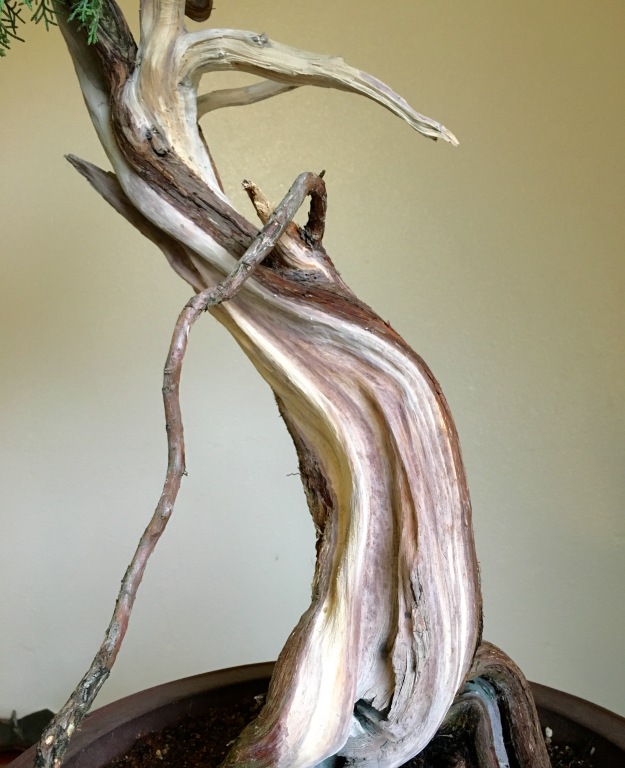
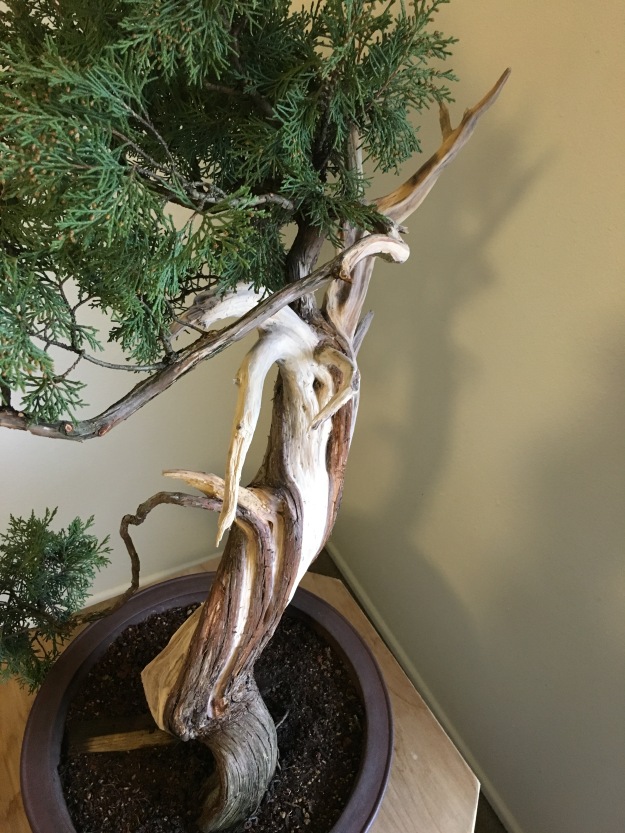


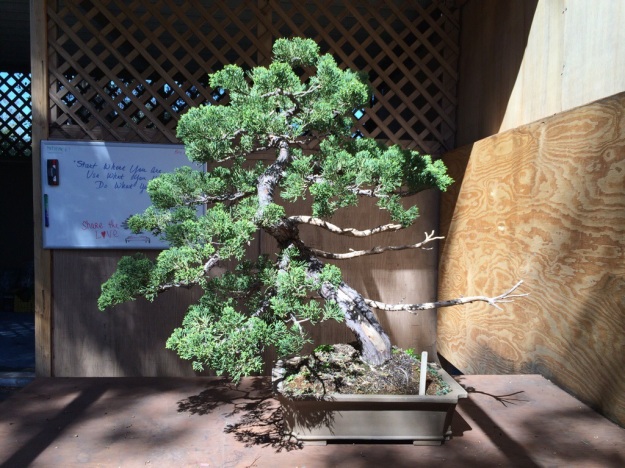
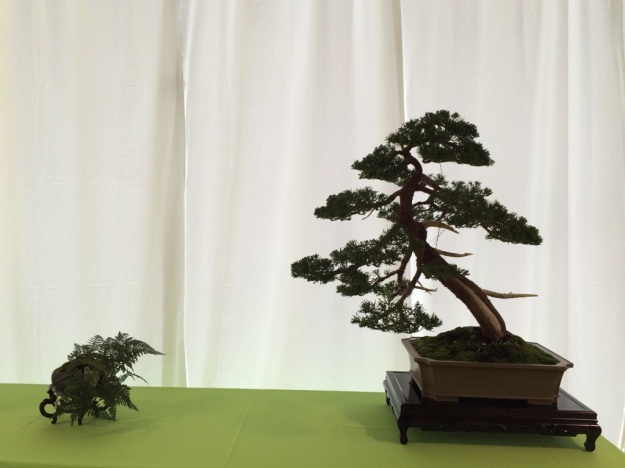
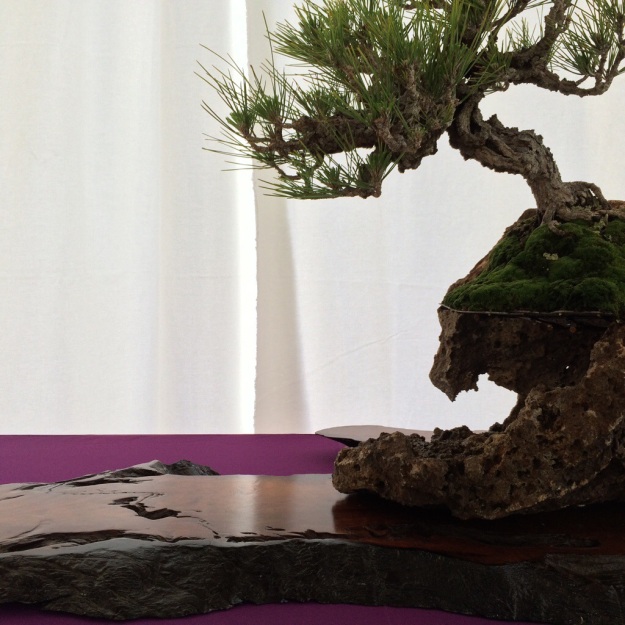 </a
</a